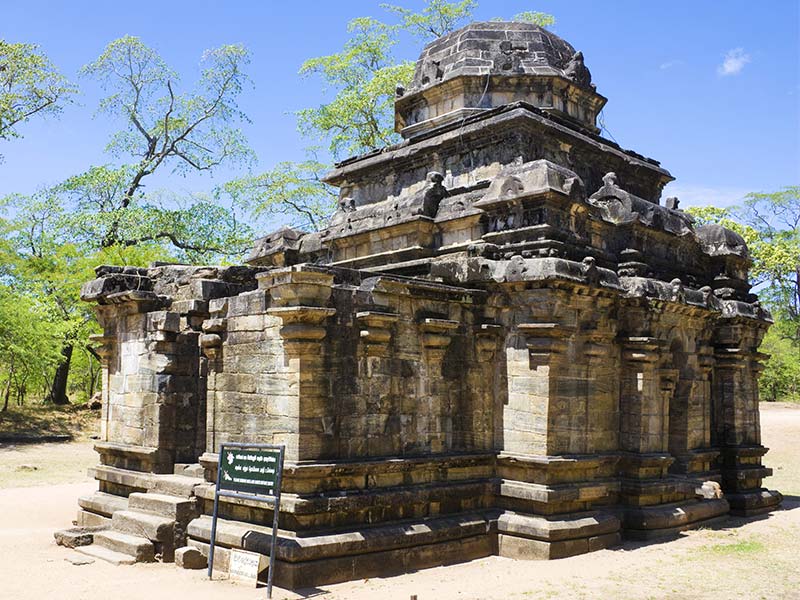Due to being a South Indian Chola stronghold for many years since the late 9th Century AD, the city of Polonnaruwa has a number of temples dedicated to Lord Siva, all of them incredibly well-built, compact monuments made of stone. The Hindu influences on Buddhist culture in the kingdom continued long after the foreign invaders were beaten back though, a testament to the policies of tolerance and the exceptional closeness that the two faiths have towards one another. Indeed, these temples are still in incredibly good condition. Two that are relatively close together are the Vishnu temple-also known as Naipena, or Cobra Hood Vihara-and the place aptly named Siva Devalaya 5. Both of them are at the northern end of the Polonnaruwa ancient urban complex, towards the vicinity of Alahana Hospital and the Pirivena complex. While nothing much remains of this Vishnu shrine, the place dedicated to Siva is quite impressive, having been restored of course but it still retains much of its original beauty.
For one we have a large, wide porch upon entering the Siva Devalaya. Inside the main building are five chambers which still feature their main centerpieces of a yoni and lingam, the feminine and masculine symbols respectively, representing the main divine couple of Parvati and Shiva.
There are even statuettes of the two deities, with Shiva in his multi-armed form of Nataraja, dancing out to the beat of creation and destruction.
Siva Devalaya is situated within the city limits themselves and is a long, rectangular building of stone, and it is the very first that we see upon entering Polonnaruwa. The architectural style is seemingly Pandyan. The Pandya Dynasty has its roots in South India too but centered on Madurai as opposed to Tanjore as in the Cholas. At this time Madurai and the Pandyan lands were part of the Chola Empire and it is no surprise that a Madurai-based architect will have designed this shrine. It consists of three parts, a garbhagruha or sanctum, an antarala or vestibule, and also a courtyard which is known as the mandapa in which it stands. The building itself is made of exceptionally well-cut and well-fitted rectangular stone blocks. In fact there is no plastering to hold the individual blocks in. As usual, there is a lingam in the inner sanctum of the temple, slightly weathered-looking with a broken base but it is still sacred to the local Hindu population.
Another of these buildings is Siva Devalaya 2, a much smaller structure that still remains in nearly pristine condition to this day, impressive in the details incised into the cuboid stone surface of the structure. It has a small dome atop the roof. It has a small door and a staircase, with which to enter the inner sanctum of the building. Built during the 10th Century, it is among the oldest of the Chola monuments still surviving in Polonnaruwa. The northern gateway of the city has another Vishnu temple, preserving just the foundations and part of the inner sanctum, as well as a statue of the god, while Siva Devalaya 3 is also in the neighborhood. It is also built according to the Chola art style. Siva Devalaya 4 is, unfortunately, in a much worse state of preservation, except that there is still a lingam and a damaged image of Lord Ganesh. It was built in the northern regions of the outer city, and is a pillared brick shrine with two chambers remaining.
Written by Vasika Udurawane for Travel Lanka Compass



0 Comment